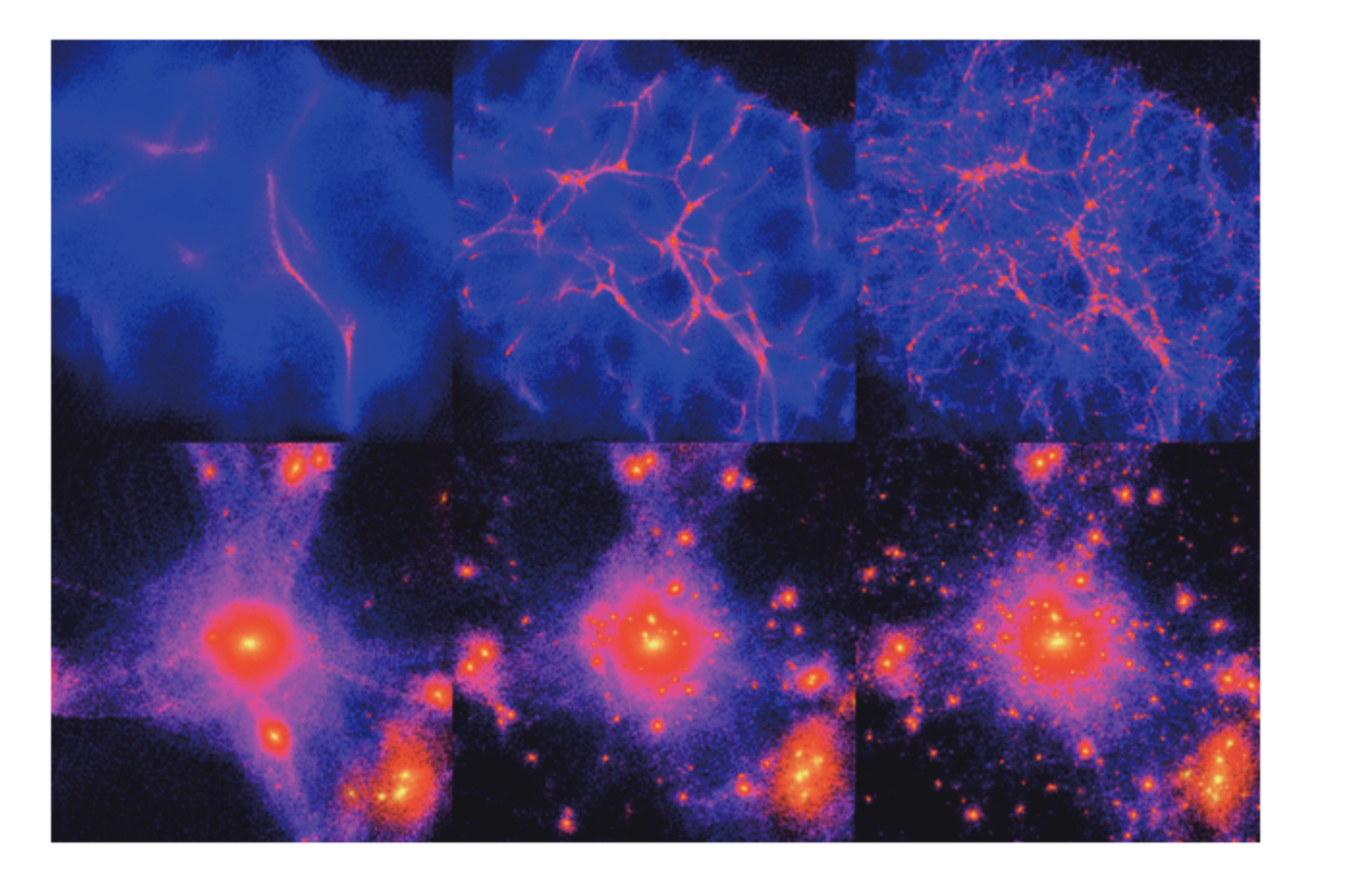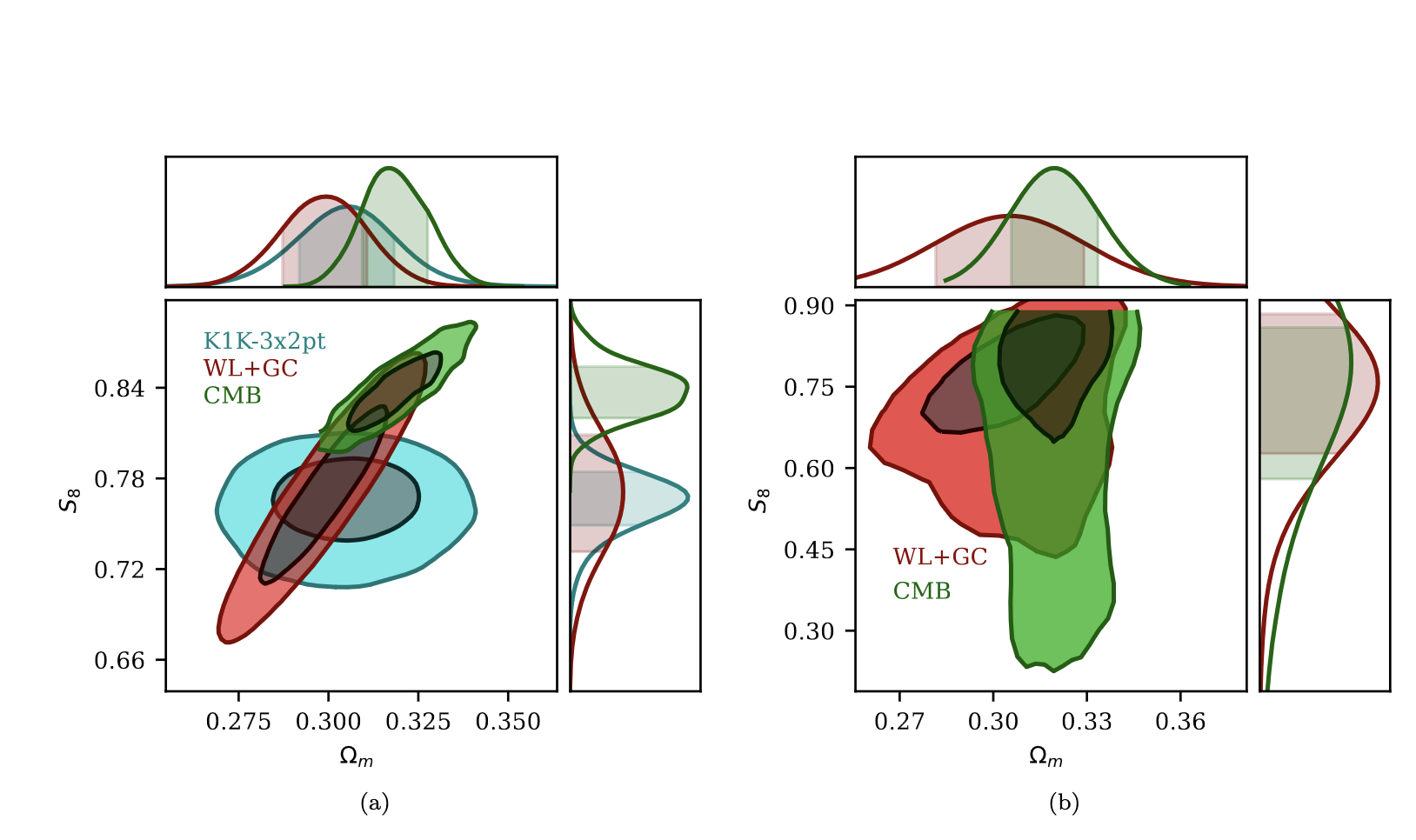Dark matter is an important component of the universe, with a content about 5 times that of visible matter, accounting for 85% of the total matter in the universe. The formation of the structure of the universe strongly depends on the properties of dark matter, especially pressure and speed of sound.
According to the pressure and speed of sound of dark matter, it can be divided into 'hot dark matter', 'warm dark matter', and 'cold dark matter'. Hot dark matter has higher pressure and velocity of sound, while cold dark matter has lower pressure and velocity of sound, while warm dark matter falls between the two. Due to positive pressure and sound velocity hindering material aggregation, the disturbance of hot dark matter is the weakest, while the disturbance of cold dark matter will be stronger. The numerical simulations of these three types of dark matter are shown in Figure 1.

Figure 1: Numerical simulation results of cold and hot dark matter. Above is cold dark matter, below is hot dark matter. Time increases from left to right. Image taken from Bing Lin Young, Front Phys 12 (2), 121201 (2017).
The standard cosmological model assumes that dark matter is cold dark matter, but recent observations have challenged this assumption. In the standard cosmological model, a relatively large S8 parameter (approximately 0.84) is predicted for the observation of Cosmic Microwave Background (CMB), while a relatively small S8 parameter (approximately 0.67) is given for the observation of Weak Lensing (WL). The difference between the two is 2-3 standard deviations, where parameter S8 represents the strength of the disturbance of cosmic matter at the current moment. That is to say, the current universe is smoother than predicted by standard cosmological models. This is the famous S8 tension in cosmology.
To solve this problem, the Institute of Astronomy and the Shanghai Observatory have collaborated to propose a dark matter model called sDBI. This dark matter appeared as cold dark matter in the early stages of the universe, but as the universe evolves, it will have a certain amount of pressure and speed of sound, thereby smoothing out some of the structure of the universe. Their research indicates that the sDBI model can solve this problem. The relevant research has been published in the International Journal of Physics, Physical Review D.

Figure 2 (a) still provides inconsistent S8 parameters for the parameter limitations of the standard cosmological model, CMB, and WL. (b) Parameter limitations on the cosmological model of sDBI dark matter. The S8 parameter is consistent within one standard deviation.
In this study, researchers simultaneously imposed parameter limitations on both the standard cosmological model and the sDBI model using existing observational data. Due to the unknown nonlinear evolution of the sDBI model, researchers only limit it to the linear part of the data. The main result of the restriction is shown in Figure 2. This result clearly indicates that under the data used, S8 tension does not exist in the sDBI model, while it still exists in the standard cosmological model.
In addition, based on its special properties, the sDBI model has the potential to solve some other small-scale difficulties in cold dark matter models, such as the problem of missing satellite galaxies and the problem of dark matter density spikes at the center of dwarf galaxies. The related work is under further research.
This work was jointly completed by Xingpao, a doctoral student at the Institute of Astronomy, Professor Kangxi, a doctoral supervisor, and Shaanxi Huanyuan, a researcher at the Shanghai Observatory. It was also supported by the National Natural Science Foundation of China.



